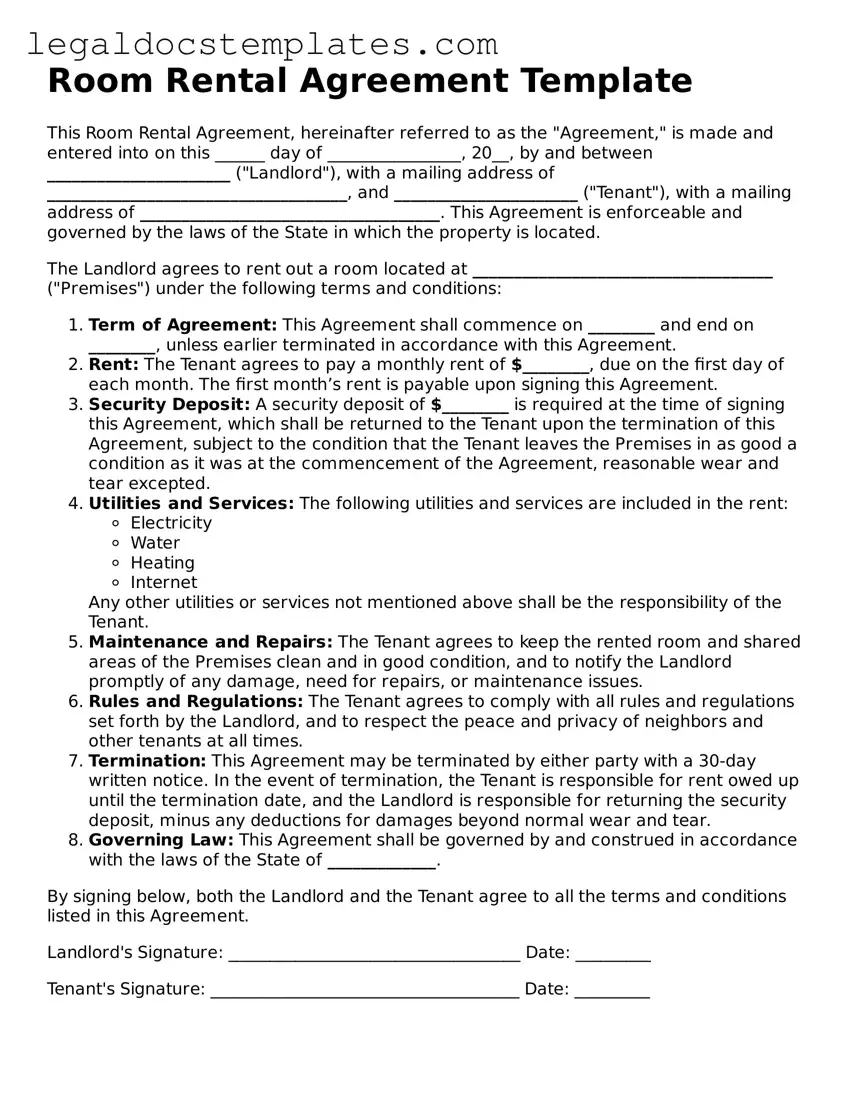The Room Rental Agreement form is closely related to a Lease Agreement, which is a document that outlines the terms under which a tenant agrees to rent an apartment, house, or other types of residential property from a landlord for a specified period. Both agreements specify rental terms, including the amount of rent, payment schedules, and the rights and responsibilities of both parties. However, a Room Rental Agreement often focuses on one room within a property rather than the entire premises.
A Sublease Agreement is another document similar to the Room Rental Agreement, primarily when a tenant rents out a room or portion of the property they lease from a landlord to a third party. Both agreements define the conditions under which the tenant or occupant can use the space, including duration, rent, and utility payments. The key difference lies in the subtenant not having a direct agreement with the property owner in a Sublease Agreement.
Similar to a Room Rental Agreement is a Lodger Agreement, typically used when a homeowner rents out a part of their primary residence to a lodger. Both documents establish the terms of occupancy, including rent, duration, and house rules. However, a Lodger Agreement often implies that the lodger shares living spaces such as the kitchen and living room with the homeowner, which might not be the case in a room rental scenario.
The Room Rental Agreement also shares similarities with a Tenant-In-Common Agreement, which is used when two or more individuals have a shared interest in a property, but each holds an individual part of it. Like Room Rental Agreements, they outline the use of property, financial obligations, and the responsibilities of each party. However, Tenant-In-Common Agreements focus more on ownership rights and responsibilities rather than rental arrangements.
A Co-Tenancy Agreement is another document related to Room Rental Agreements, especially in situations where multiple tenants rent the same property. It outlines the shared responsibilities, including rent and utility payments, and the individual responsibilities of each tenant. While both agreements deal with multiple occupants in a single property, a Room Rental Agreement may focus on the rental of a specific room with common areas shared, unlike a Co-Tenancy Agreement, which typically applies to the whole property.
Lastly, a Property Management Agreement shares some characteristics with a Room Rental Agreement, particularly in terms of property maintenance and use. This agreement is between a property owner and a management company or individual who handles the day-to-day operations of a property, including leasing rooms. While a Room Rental Agreement directly involves the landlord and tenant, a Property Management Agreement focuses on the responsibilities of managing the property, which may include facilitating Room Rental Agreements.
